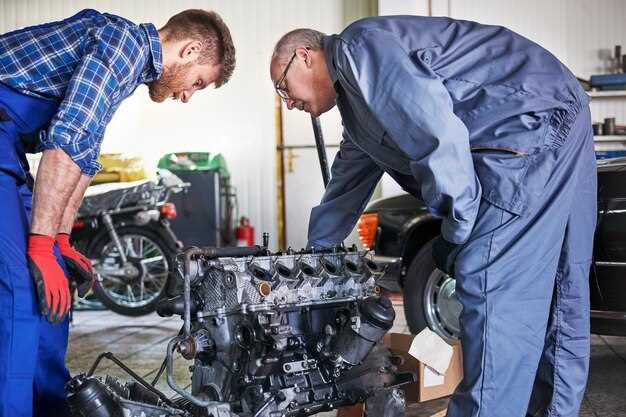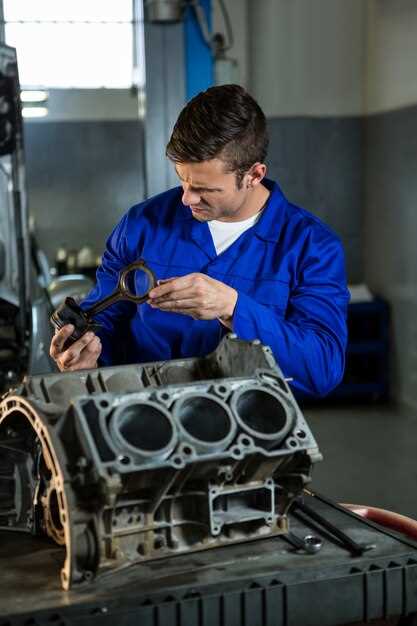
Turbocharging is one of the most effective ways to enhance the performance of an engine. By compressing the air entering the engine, a turbocharger allows for a greater amount of fuel to be burned, resulting in increased power output. However, the installation process can be complex and requires careful consideration to ensure optimal performance and reliability. Understanding the essential elements before diving into installation is crucial for both beginners and seasoned mechanics.
Before you begin the installation of a turbocharger, it is important to familiarize yourself with the components and functions involved in the process. Not only should you identify the type of turbocharger best suited for your vehicle and driving style, but also the necessary supporting modifications that may be required. Factors such as engine tuning, exhaust systems, and intercooling play vital roles in the overall success of the turbocharging process.
Additionally, be prepared to invest adequate time and resources into the project. Installing a turbocharger involves various mechanical skills and may necessitate specialized tools. Ensuring that you have a comprehensive plan, including a detailed checklist of parts and steps involved, will help simplify the process and minimize potential setbacks. This guide aims to equip you with the knowledge needed to confidently approach the installation of your turbocharger and make informed decisions throughout the process.
Choosing the Right Turbocharger for Your Engine

Selecting the appropriate turbocharger for your engine is crucial for optimizing performance and efficiency. Several factors must be considered to ensure compatibility and achieve desired power outputs.
First, assess your engine’s specifications, including its displacement, configuration, and current horsepower. Turbochargers are available in various sizes and types, each tailored for specific engine characteristics. A turbocharger that is too small may limit power potential, while one that is excessively large can lead to turbo lag, making it essential to find a balance.
Next, consider the application of your vehicle. Different driving conditions, whether on the street, track, or off-road, require distinct turbocharger setups. For instance, a daily driver might benefit from a responsive turbo that spools quickly, while a race car may require a larger unit to maximize high RPM power.
It’s also vital to understand the boost pressure needs of your engine. The chosen turbocharger must be capable of achieving your desired boost levels without compromising engine reliability. Consult manufacturer charts to match your engine’s airflow requirements with the turbocharger’s capabilities.
Materials and construction play a significant role in a turbocharger’s durability and performance. Consider options made from high-quality alloys designed to withstand extreme temperatures and pressures. Additionally, examine the included features, such as ball bearings versus journal bearings, as this can affect spool time and longevity.
Lastly, ensure that your supporting modifications and fuel system can accommodate the increased performance. Upgraded fuel injectors, intercoolers, and exhaust systems may be necessary to maximize the benefits of the chosen turbocharger. Ensuring these components are compatible will help achieve a reliable and powerful build.
Preparing Your Vehicle for Turbocharger Installation

Before embarking on the installation of a turbocharger, it is crucial to prepare your vehicle adequately. This preparation ensures that the installation process runs smoothly and that the turbocharged system functions optimally once installed.
First, ensure your vehicle is in good mechanical condition. Check the engine for any existing issues such as leaks, excessive wear, or signs of poor maintenance. Addressing these problems before installation will prevent complications and ensure the optimal performance of the turbocharger.
Next, gather all necessary tools and equipment required for the installation. Common tools include a socket set, torque wrench, screwdrivers, and pliers. Having everything on hand will minimize downtime and allow for a more efficient installation process.
Additionally, prepare a clean workspace. This area should be free from debris and have enough room to maneuver around the vehicle. A well-organized workspace will help keep track of all parts and reduce the risk of losing any components during the installation.
It is also advisable to disconnect the battery and relieve any pressure from the fuel system before beginning the installation. This step enhances safety and prevents fuel leaks during the process. Ensure that all electrical connections and hoses are labeled properly to simplify reassembly.
Finally, consult your vehicle’s manual and any turbocharger specific installation guides. Understanding the specific requirements and recommendations for your vehicle model will provide valuable insights and help avoid common pitfalls during installation.
Tuning and Testing After Turbocharger Installation
Once you have successfully installed the turbocharger, the next crucial step is tuning your vehicle for optimal performance. This process involves adjusting the engine control unit (ECU) to accommodate the increased air intake, boost levels, and overall changes in engine dynamics due to the added forced induction.
Begin by using an aftermarket tuning tool or software specifically designed for your vehicle model. This allows you to modify parameters such as fuel delivery, ignition timing, and boost control. Proper tuning helps ensure that your engine runs efficiently, minimizing the risk of knocking or damage. It is essential to monitor air-fuel ratios closely, aiming for a stoichiometric ratio that supports performance without compromising engine health.
After tuning, conducting a series of tests is vital to evaluate the effectiveness of your modifications. Start with a baseline dyno run to assess horsepower and torque figures. This will provide a reference point to measure improvements. Pay attention to boost levels and ensure that they remain within safe limits for your engine type. Over-boosting can lead to engine failure if not managed properly.
During initial test drives, check for any abnormal sounds, vibrations, or performance issues. Listen for signs of turbo lag, which can indicate that your tuning may need further refinement. Monitor temperatures closely, as a turbo system can increase engine heat significantly. Use gauges for boost pressure, exhaust gas temperature (EGT), and coolant temperature to keep track of the engine’s health under various driving conditions.
Consistent testing under different scenarios–such as acceleration, deceleration, and varying loads–will help you fine-tune the setup. Keep in mind that tuning is an iterative process; based on test results, you may need to make additional adjustments to the ECU settings. With careful tuning and thorough testing, you can maximize the benefits of your turbocharger installation, ensuring enhanced performance and reliability.

